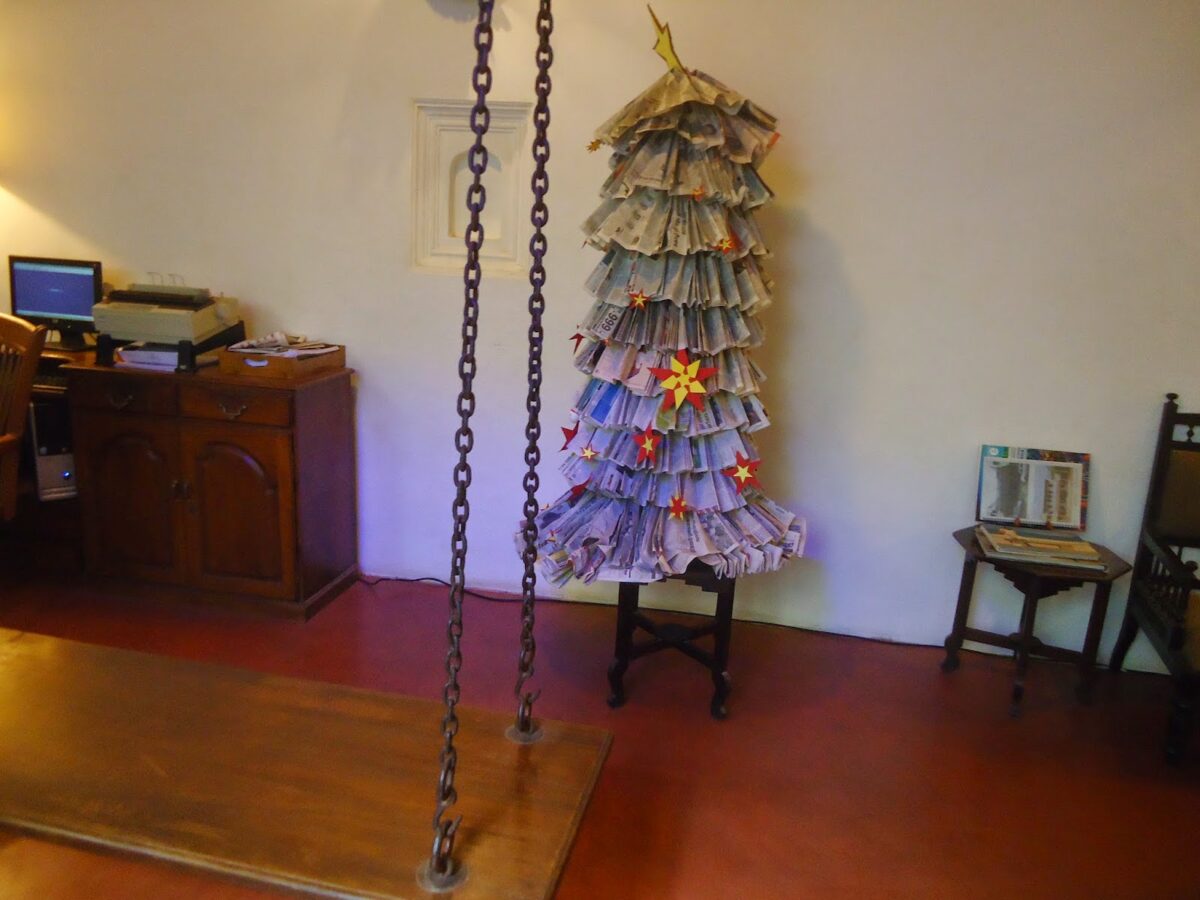 |
| An unusual Xmas tree made of newspapers seen at Maison Perumal Puducherry in Jan 2014 |
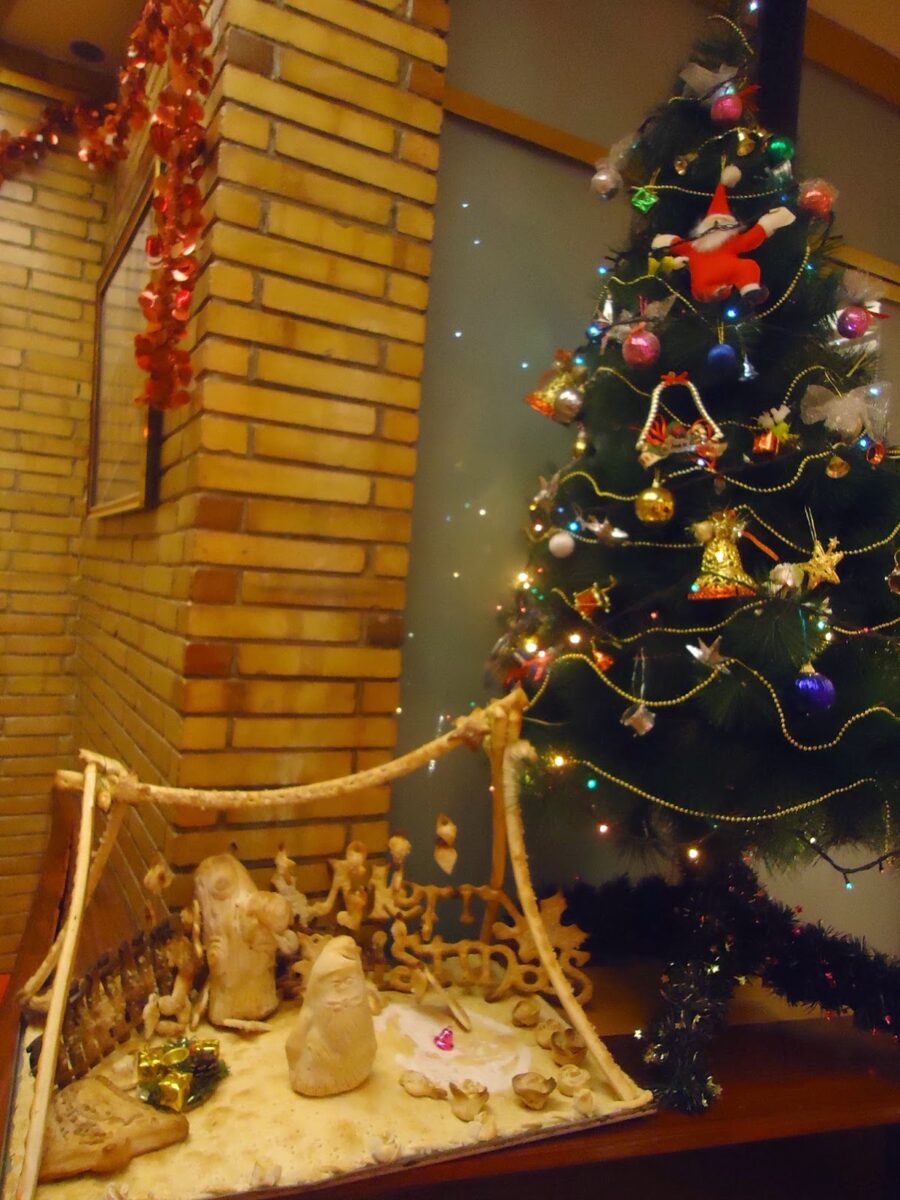 |
| Nativity scene made with baked goods |
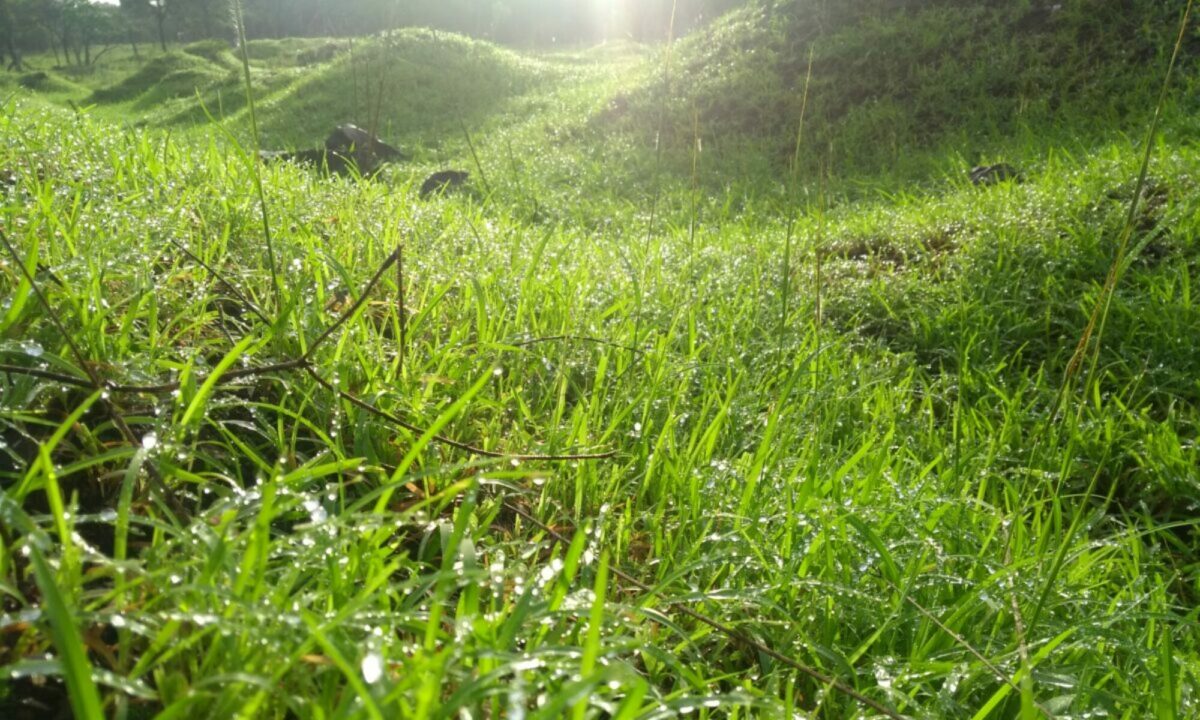
A khatta-meetha take on life around me through my presbiopic eyes!
* From the 10th
century AD, Goa
was successively ruled by the Kadambas, then Muslim rulers who were the
Shahs
from Bijapur and then the Portuguese. At all times, it remained
flourishing trading centre and had sea-links with far flung Arab nations
and later with the south-eastern
nations. The movement of goods and people and rulers and
administrations from these regions influenced homes, buildings and the
people
of Goa. Its architecture,
crafts, arts, homes, names, religious practices are an interesting
amalgamation of these.*
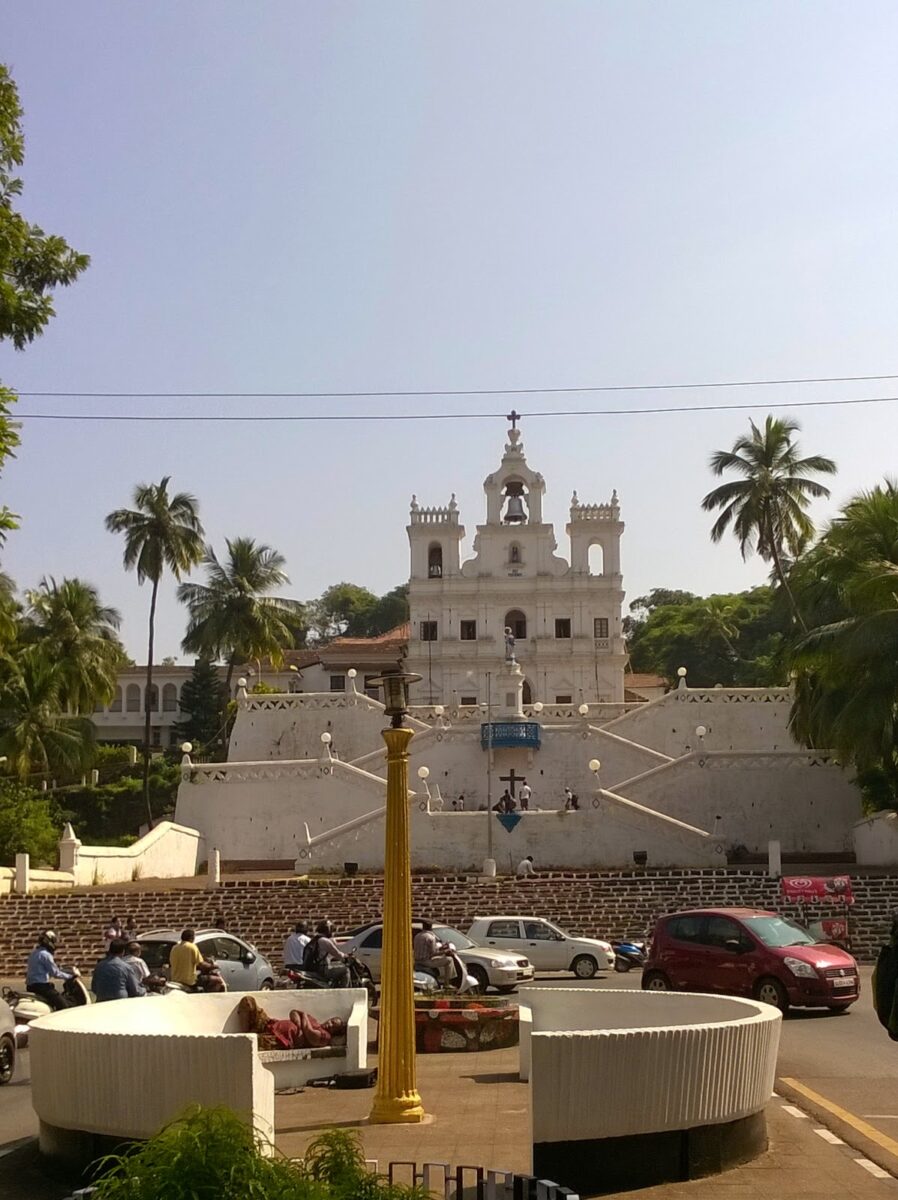
Well-entrenched a few hundred years ago, we walked out and turned into the lane next to the Altinho hill and stopped to admire the majestic staircase that leads up to the Palace of the Archbishop
of the Goan Diocese. Many generations must have gone up and down these and still do but a survival instinct in busy traffic forced back into the present moment.
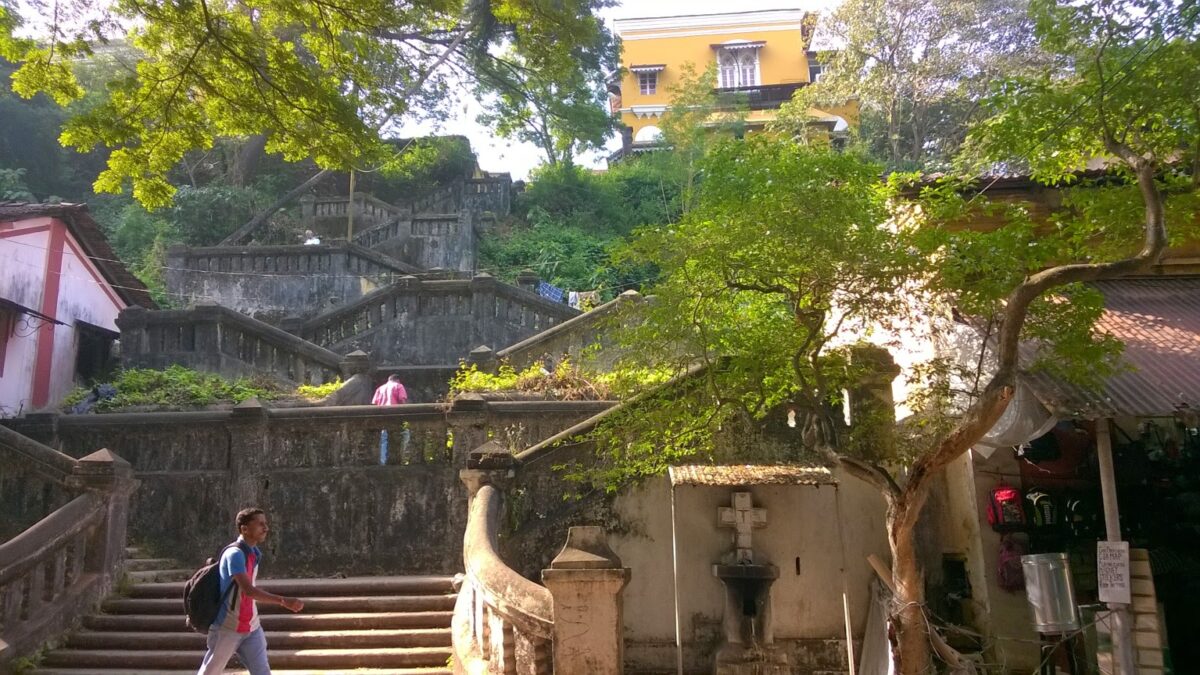
The walls adjoining the street were festooned with colourful
Bougainvilleas and Madhumalati (Rangoon Creeper) adding another touch
from colour palette. The view from the top would be stupendous for sure
but we had to hurry to keep up with our leader… we were on a walking
tour remember?
The buildings in these parts were not the modern high rise structures
rather small one or two storey homes with sloping tiled roofs set in small winding lanes. We were
in Fontainhas the so-called Latin quarter of Goa. Every structure was of
a different colour which were natural dyes we learnt. So it was turmeric or indigo which was the secret of the fascinating colourful homes. Many of these have been restored to their old glory for people to live in or have been turned into guest houses or art galleries.
Many families continue to use old and priceless crockery and furniture and artifacts
on a daily basis. Wow! Its antiques like these that serve as a bridge
between our past and present and allow us to effortlessly time-travel
across hundreds of years. Those who are able to enjoy the
best of both worlds are incredibly lucky.
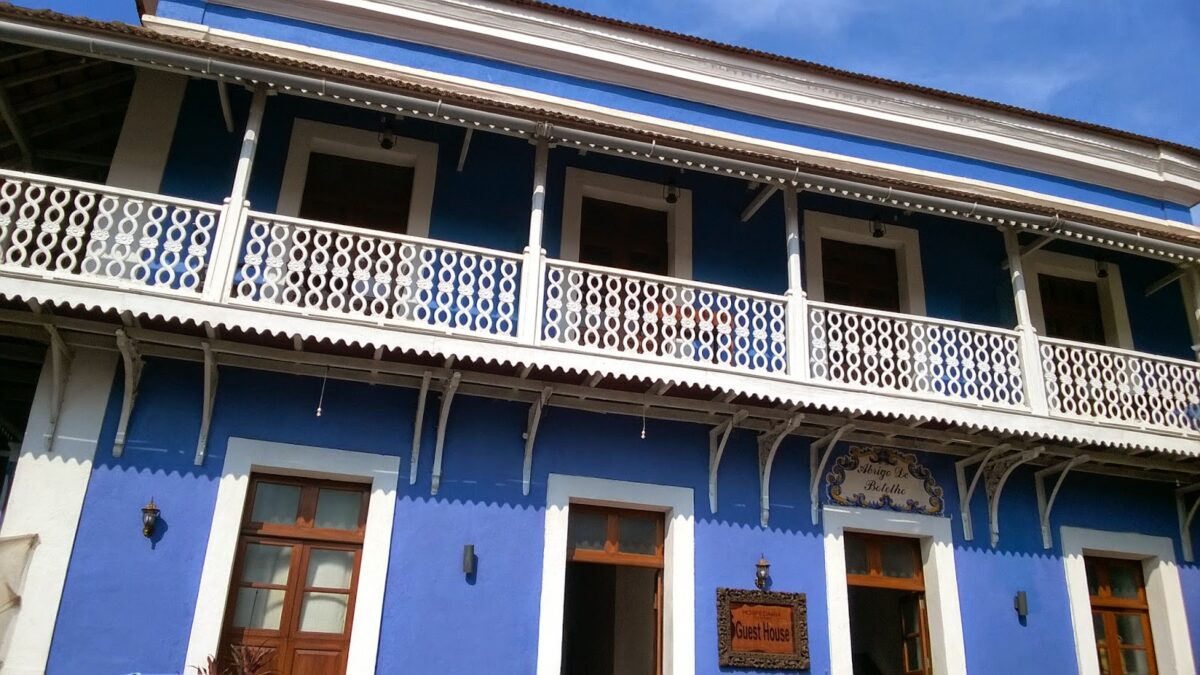
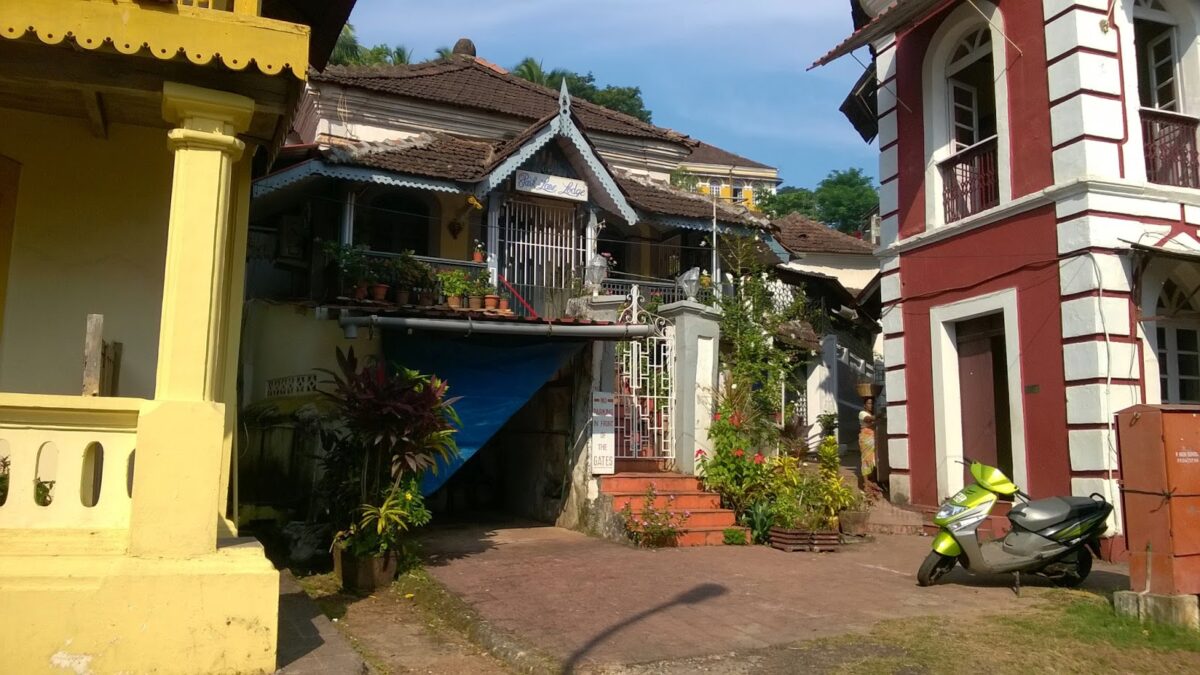 |
Besides other unique features, we noticed the shell windows and tiled ceramic name plates at the entrances. Shell was a wonderful material for windows as it gave privacy plus diffused light. The tiles were typical Azulejos art which is a Portuguese craft of painted and glazed ceramic tiles. Artists have kept this art alive in Goa.
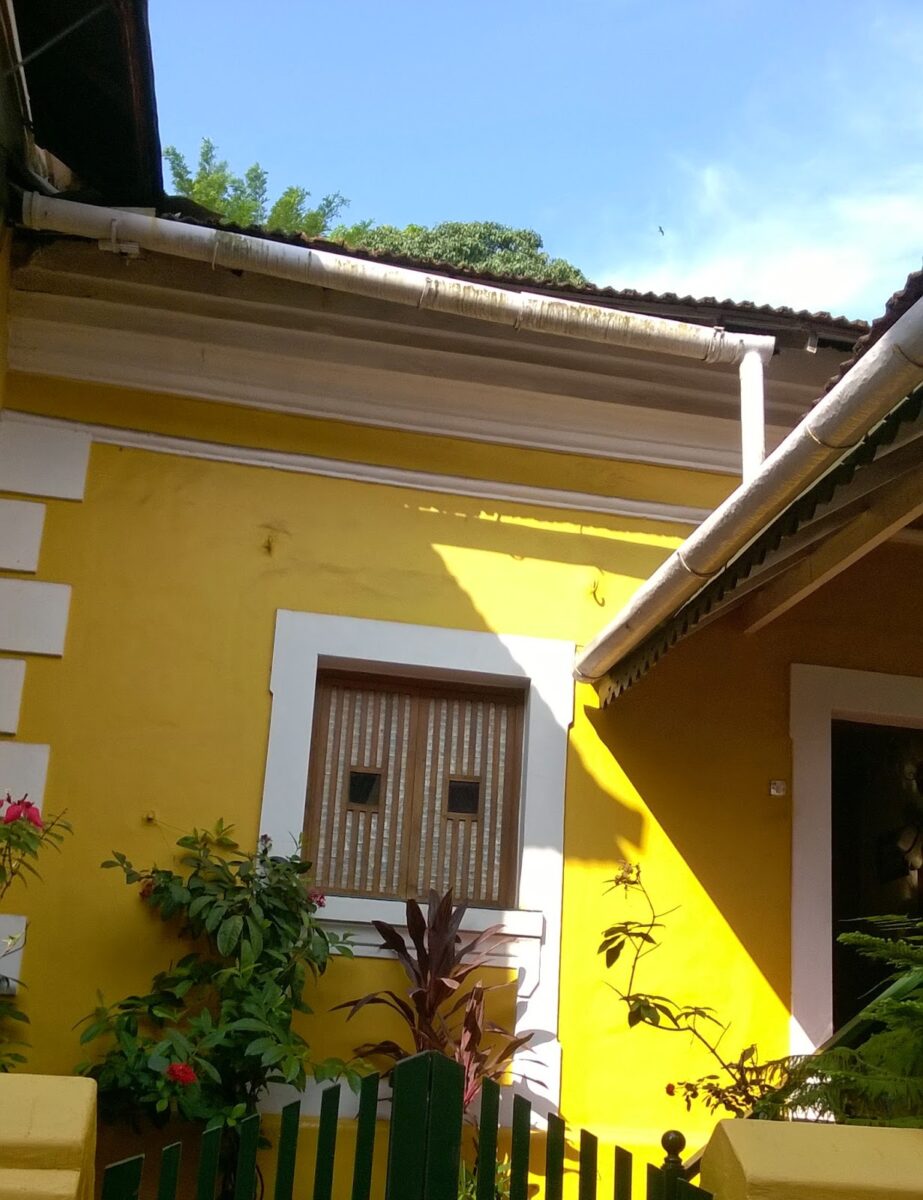 |
| Shell windows |
 |
| An example of Azulejos art but this image is not from our walk of Fontainhas |
The chapel dominates the square and would have been an activity hub in
the years gone by. Street planning was not conspicuous in this charming
quiet neighbourhood.
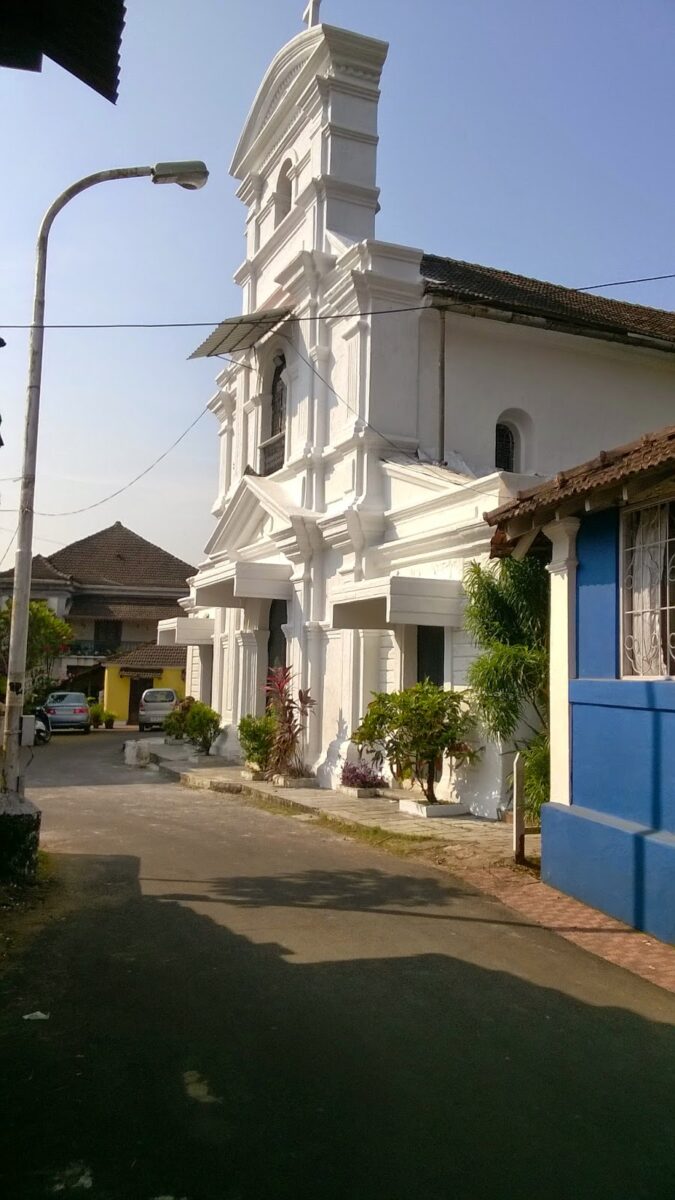
We walked out toward the riverfront through an area which seems to have planned streets and road side drains. The quaint overhanging balconies protect pedestrians from rain and sun! This area still has shops of the ‘old’ trades – Typewriter repairs for example! The narrow sidewalks had local vendors who sold fresh Papayas, Tomatoes, Bananas and bunches of Tirphal which is spice specially used in Goan food.
Very soon we had reached the Tobacco Square so named because Goa was a trading hub for tobacco despite tobacco cultivation certainly not being in the vicinity. We then moved past the summer palace of the Sultan of Bijapur (Idalco Palace) to the Abbe Faria Square and the home of Mhamai Kamats. The municipal garden named after Garcia de Orta (who was a physician and naturalist) was up next with its very thoughtful layout of stores. Our walk ended at the Cafe Tato with some authentic Goan breakfast.Yummmmm
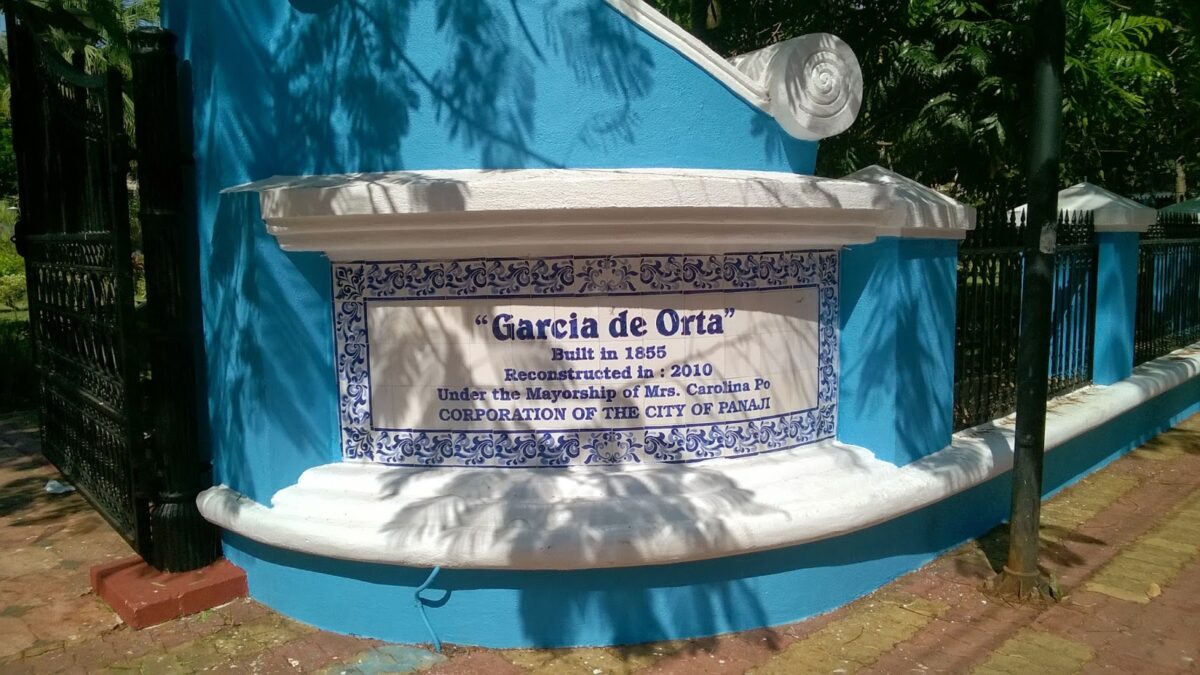 |
| Municipal garden at Panjim |
Each of these places has a very interesting tale and some of which is in Cholta Cholta’s book called ‘Cholta Cholta’.
A memorable walk down memory lane and well off the beaten track!
Truly a walk to remember.
🙂
*Disclaimer: I am not a historian so this post is quite likely to have
overlooked several important events. Do refer to more learned resources
if Goa’s history is what you are looking for.*
**Disclaimer: I have no interest financial or otherwise in Cholta Cholta .
There can be several inspirations for travel – architecture, history, natural wonders, food, bragging points (ahem)… But music too is a huge motivator for people to travel. India with its rich musical heritage has music festivals of repute held across the country. Its an excellent opportunity to hear stalwarts and upcoming artists and see the local sites as well. I can say that with confidence because it was music that took me to Bhopal and I could see Sanchi Stupas because of that visit!
Here is my collation of music festivals around India. Hope it can inspire at least a few travellers!
(Kindly reconfirm information about dates and entry tickets before your visit.)
1. The Harivallabh Sangeet Mahasabha
in Jalandhar, Punjab. This
was first held in 1875 and is now held in the last week of December every
year. Entry is free. Here is the programme for Dec 2014.
2. Sawai Gandharva Bhimsen Mahotsav – Held in Pune each year in the first half of December. Usually spread over four days, the performances are held in the evening but the last day (which is always a Sunday) has events in the morning as well. Thus tourists can use the morning hours to visit other places in Pune, join a heritage walk and get some shopping done too! Ticketed entry. This is a link to the schedule for Dec 2014.
3. Dover Lane Music Conference in Kolkata, West Bengal. Here is the link. http://www.doverlanemusicconference.org/aboutus.html Ticketed entry.
4. Saptak Music Festival in Ahmedabad, Gujarat. Held from 01 to 13 January every year. Entry is for members. Here is a link to their Jan 2015 event. http://www.saptak.org/saptakNews
5. Tansen Samaroh at Gwalior in Madhya Pradesh is yet another important event for Hindustani classical music lovers and is a tribute to the maestro Tansen. Here is a link to their 2014 events and the festival will be held from 05 to 08 Dec 2014.
The DD Bharati Channel has live telecasts of some of the above music festivals.
There would be many more such music events in other cities. We would love to hear about those too.
Enjoy!
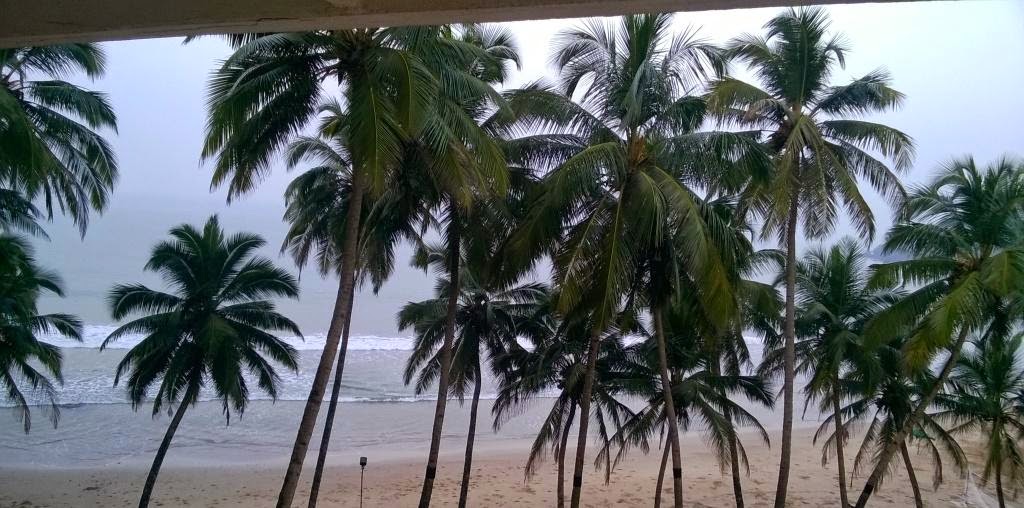 |
| Unbeatable Beaches |
While I would not like to suggest an itinerary, I will share some spots in Goa* that we found most interesting. I had always been struck by the brilliant yellow, blue, brick red coloured homes and buildings in Panjim so architecture seemed to be a good starting point. That is what took us to ‘Houses of Goa‘ an interesting museum by Arch Gerard da Cunha. Built to resemble a ship, it is set amid lush greenery and has an eclectic collection of Goan homes through the ages. The display over three floors is even more interesting and showcases western influences on homes. There are old photographs, models, beautiful artifacts and heirlooms, computer displays that give an in-depth perspective of the ‘how and why’ of traditional houses. Sketches by Mario are an added attraction. Admire the old tiles, notice the intricate grills and railings and climb up a quaint winding stairway for a lovely view from the gallery at the top. Learn the difference between an Entrada, Veranda and Balcao and what makes Hindu and Catholic Goan houses so special! The museum is located at Torda, Salvador do Mundo in Bardez and give yourself at least an hour to explore it. Entry fee was Rs 25 on Sundays and Rs 100 on weekdays. They do have a small cafe and the staff is more than happy to help. If architecture is your cup of tea, put this museum on top of your list.
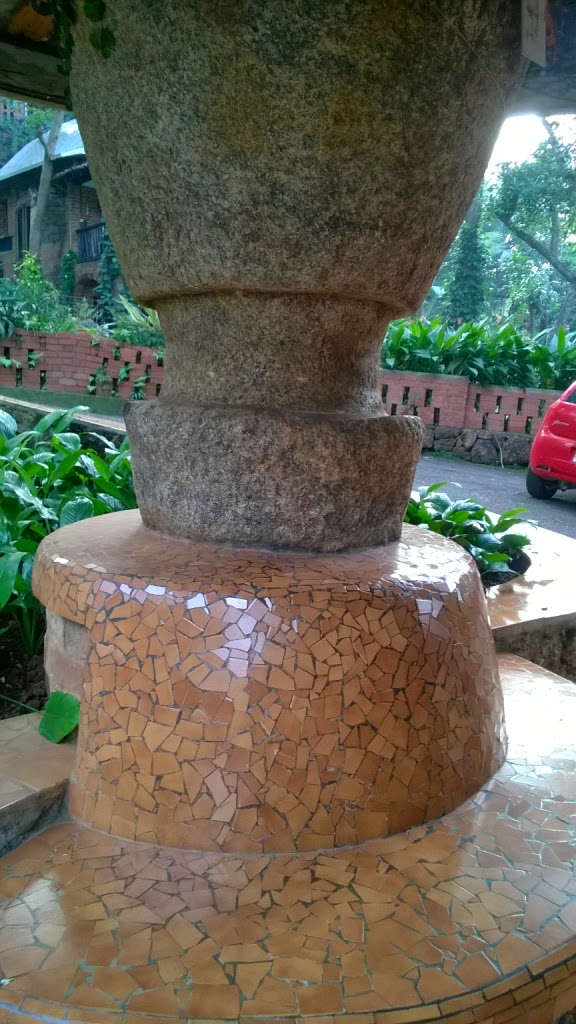 |
| A pillar made of grinding stones |
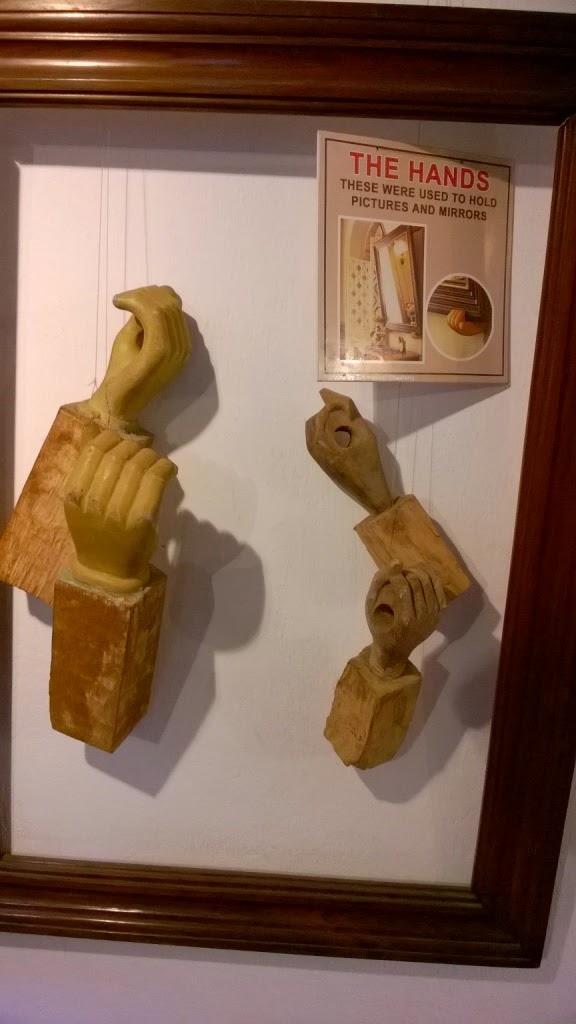 |
| Interesting displays |
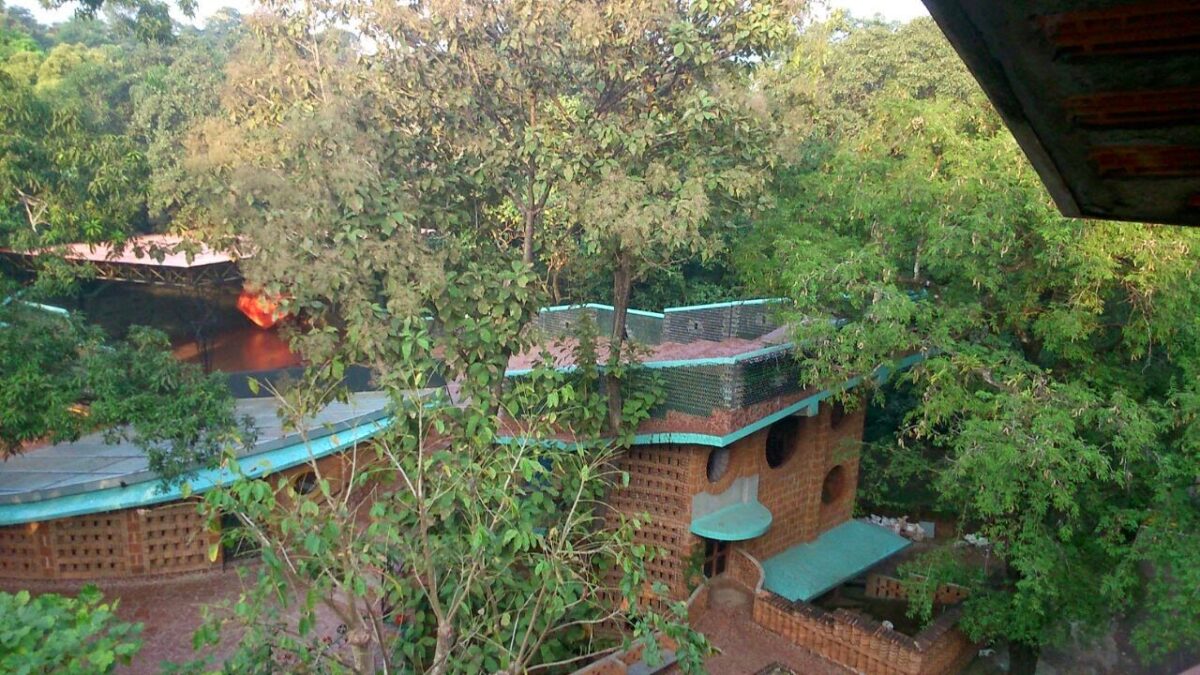 |
| View from the top floor |
Not the museum kind?
Then simply drive around the interior roads along the Mandovi or Zuari River. The almost pot-hole free-roads meander amid hills, paddy fields, ponds, as a tiny village appears suddenly, well camouflaged in the surrounding foliage. It disappears even before you can whip out your camera unless you are able to coax your driver to stop. Walk around the local market or village fair, chat with the local vendors and pick up some fresh Tirphal. Tirphal is a typical spice used in Konkani cuisine. The best option is to simply sit under a tree and watch the world go by. Time seems to stand still and the tranquility in the surroundings imperceptibility infects you. Suddenly you may ask yourself ‘What For this rat race?’
Nature lovers will enjoy the Dr Salim Ali Bird Sanctuary which is open all year round. Visit a workshop of the Azulejos artists who make the typical blue painted ceramic tiles. Their creativity and intricate work has to be seen to be believed.
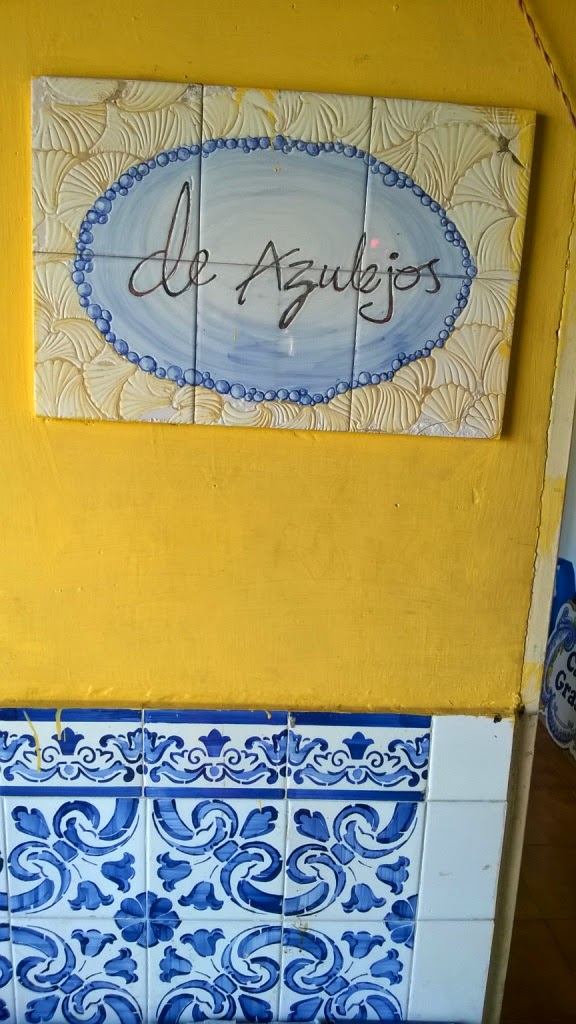 |
| Azulejos |
Take an amazing ride on the river ferry. Look out for the mangroves and keep your binoculars handy to spot birds along the marshland. One simply drives a vehicle right on to the boat which takes you across the river. We paid Rs 10 for our car on the Chorao-Ribander ferry and it was free for two wheelers and people. How cool is that…
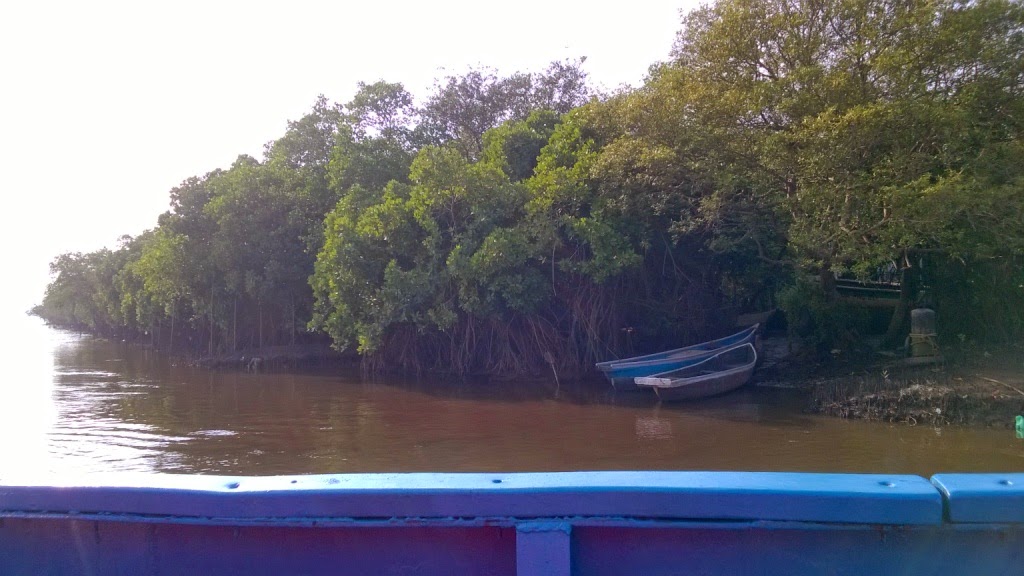 |
| Mangroves |
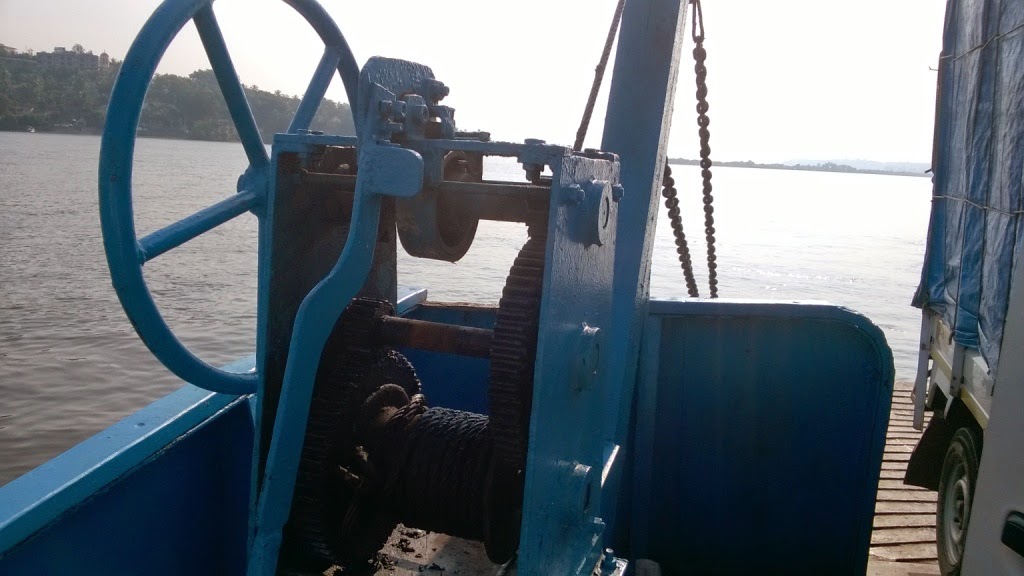 |
| Vehicles drive up the ramp onto the boat which then sails across the river |
If you have time on hand, then drive up to the Tiracol fort situated at the northern tip of Goa. Love cashews? Then a visit a cashew factory should be on the cards. This is not always possible as officials are not keen to entertain tourists. But we got lucky and you, dear readers, will get an e-view of some nutty processing.
But I shall leave that for another post. 😉
Go! Get away from the screen. Goa is waiting for you!
🙂
*These spots are in North Goa.